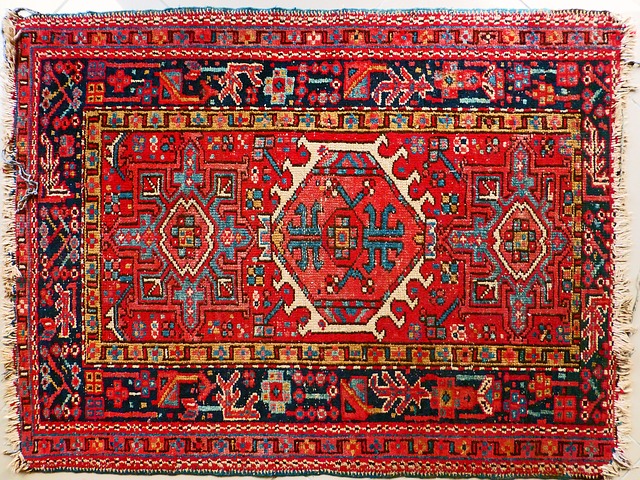Since time immemorial Persian rugs and carpets have adorned the most elegant floors. No wedding list that is well thought out does not include one or two Persian carpets. If they are inherited or purchased in antique shops or auctions, they are even more desired, as it is said that the more used, the more refined.
Even in modern home decor, Persian carpets do not look out of place; they have a timeless charm that integrates into any decoration. Although it is known that the ancient Persians used insects and plant remains in their carpet manufacture to make them more resistant, let us not forget that they were designed to cover the soil of the tents of these nomadic people and protect them from the cold during icy weather.
We must not get a non-genuine rug when paying a premium price. Before we think about where to place them or if we want to spend so much money for a floor covering, we must know the characteristics of these beautiful works of ancient craftsmanship.
Following the tips in this article, you will have a good idea of how to distinguish handmade Persian carpets from those that have been manufactured by machines. However, you will not have an eye like a professional, so if in doubt, always consult an expert before parting with money.
Seven ways of recognizing a genuine Persian rug or carpet:
- If the colors are too loud and the threads look synthetic, and of low quality, you can see that the item is fake at first glance, and no matter the other decoration in a room, they will always look bad. Delicate rugs, carefully made of silk or virgin wool, demand exceptional attention; the secret of such craftsmanship is passed from generation to generation.
- An important step to check if a carpet is handmade is to always look at the reverse side. In authentic Persian carpets, the design is perceived as clear as on the upside, but it is not visible in machine-made carpets. If the rug is handcrafted, it will have handmade side trims. On machined rugs and carpets, the sides are very even and obviously machine-made.
- The raw materials used for making Persian carpets are wool, silk, and cotton. Sheep and lambswool are highly appreciated, as they are long fiber wool when the sheep are shorn after the winter season. In some older carpets, gold, silver, or silk threads were used surrounded by a precious metal thread. Hence the huge figures reached for these coveted pieces at international auctions.
- The knot of a genuine Persian carpet is asymmetrical, simple, and achieves a very delicate effect. Depending on the origin, Persian rugs have different motifs. For example, nomadic carpets woven by Gashgai tribes in Shiraz southwest Iran have simple geometric figures and often several diamonds in the carpet or rug center.
- All authentic Persian carpets are knotted by hand and because of this may have irregularities in size, not having precisely the same regular measurements. Being handcrafted, Persian carpets are unique pieces, and consequently, the designs vary from rug to rug. Carpets made by machine are all identical, that is, they are always the same size and design.
- Where you buy a rug can also give you a clue to a rug’s authenticity, although this should not be a sole criterion by any means. If you visit a showroom that only deals in Persian rugs or carpets, you are far more likely to be looking at the genuine article, as no professional rug dealer is likely to risk his reputation and livelihood by selling fakes.
- Another indicator that determines if a carpet has been handmade has to do with its origin. In authentic handmade Persian rugs, they must come from Iran, which was formally known as Persia. Other handmade carpets may come from Afghanistan, Turkey, or Pakistan, but these are not Persian carpets, but Oriental. As for copies, many hail from other countries such as India, Pakistan, China, or North African countries. So, keep that in mind if you are traveling and want to buy a carpet. When choosing a piece in a store or marketplace, always look for the label where the place of origin is specified.







Recent Comments